Discover 10 hidden attractions, cool sights, and unusual things to do in Downpatrick (United Kingdom). Don't miss out on these must-see attractions: Downpatrick and County Down Railway, Down Cathedral, and Down Arts Centre. Also, be sure to include Inch Abbey in your itinerary.
Below, you can find the list of the most amazing places you should visit in Downpatrick (Northern Ireland).
Table of Contents
Downpatrick and County Down Railway
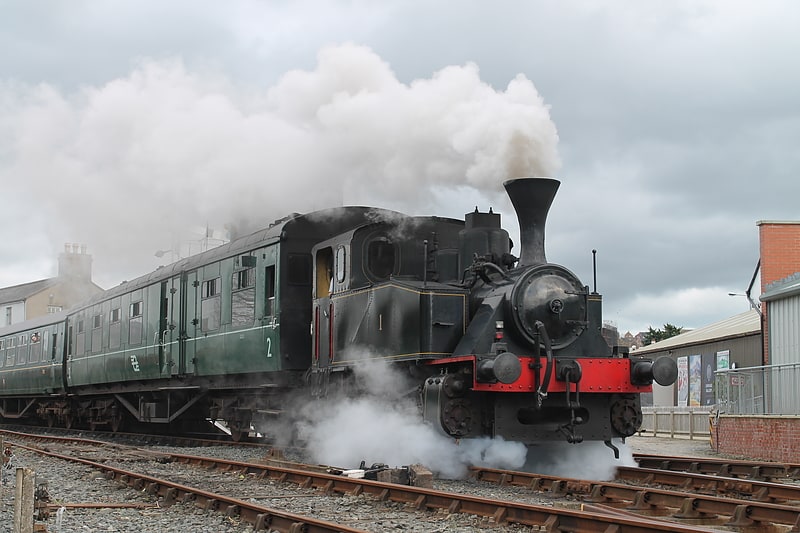
Museum in Downpatrick, Northern Ireland. The Downpatrick and County Down Railway is a five-foot, three-inch gauge heritage railway in County Down, Northern Ireland. It is operated by volunteers and runs passenger trains using steam and diesel locomotives, diesel railcars, and vintage carriages. The railway has approximately three miles of track in a triangular-shaped layout, which connects the town of Downpatrick with the historical sites of Inch Abbey to the north and King Magnus’ Grave to the south. It also houses a museum of railway artefacts and rolling stock originating from both Northern Ireland and the Republic of Ireland, dating from the 1860s to the 1980s.
The DCDR’s development was spearheaded by a group of local railway enthusiasts in the early 1980s, and work started on building the railway in 1985. Most of its track is on part of the now-closed Belfast and County Down Railway mainline which ran between Belfast, Downpatrick, and Newcastle. The heritage railway first opened to the public in December 1987, and originally consisted of little more than a short stretch of track with an E-class diesel locomotive and a brake van. It has expanded incrementally since then, and reached its current length with the completion of the Inch Abbey line in 2005.
The DCDR is the only five-foot, three-inch gauge heritage railway in Ireland, which has been the standard gauge on the island since the 1840s. With its Downpatrick terminus located at the foot of Down Cathedral and next to the Saint Patrick Centre, the railway has become a major tourist attraction for the town and has accumulated several hundred members. It currently has three steam and eight diesel locomotives, five of which are on loan from the Irish Traction Group, as well as the largest collection of Victorian railway carriages in Ireland. Some of these have been overhauled by the railway’s volunteers from a dilapidated state, and have received awards for their restoration. The railway has been temporarily closed to the public since March 2020 due to the COVID-19 pandemic, although volunteers are still carrying out essential work to ensure that it can reopen in the future.[1]
Address: Market St, BT30 6LZ Downpatrick
Down Cathedral
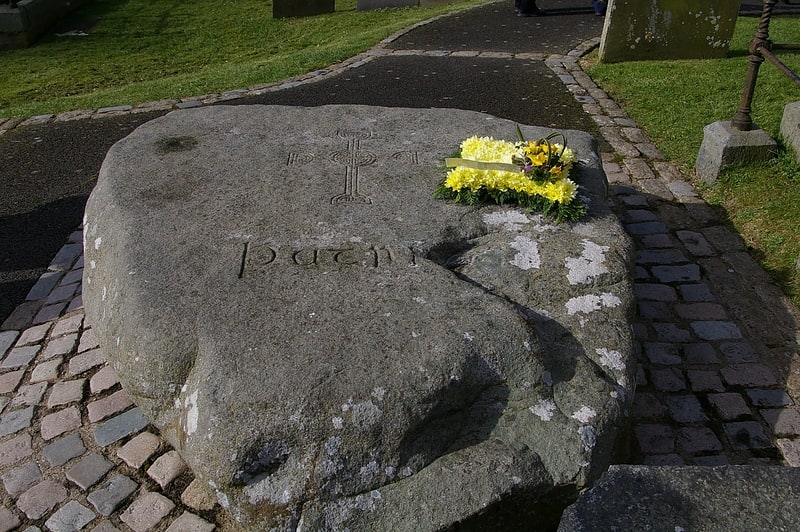
Cathedral in Downpatrick, Northern Ireland. Down Cathedral, the Cathedral Church of the Holy and Undivided Trinity, is a Church of Ireland cathedral located in the town of Downpatrick in Northern Ireland. It stands on Cathedral Hill overlooking the town. It is one of two cathedrals in the Diocese of Down and Dromore. The cathedral is the centre point of Downpatrick a relatively new name for the settlement having only come into usage in the seventeenth century.[2]
Address: 35 English St, BT30 6AB Downpatrick
Down Arts Centre
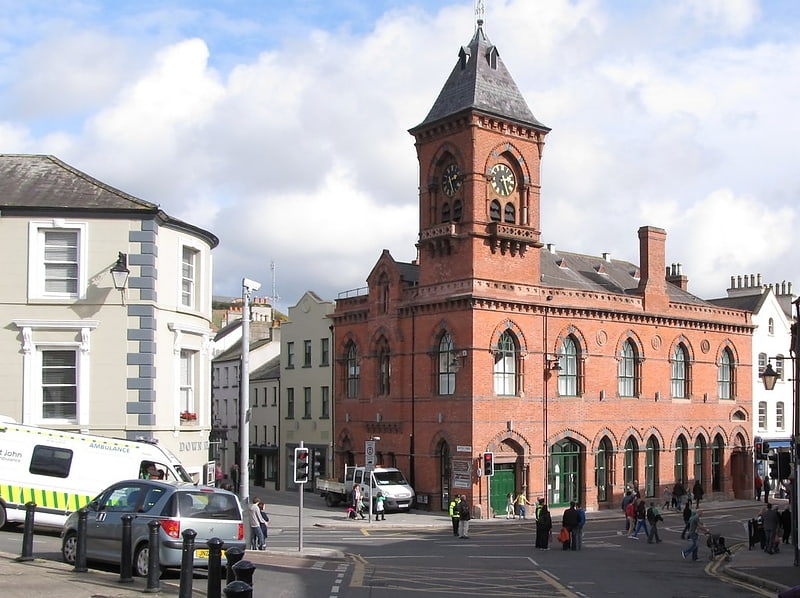
Art center in Downpatrick, Northern Ireland. The Down Arts Centre, formerly Downpatrick Town Hall and also Downpatrick Assembly Rooms, is a municipal structure in Irish Street in Downpatrick, County Down, Northern Ireland. The structure, which was the meeting place of Down Urban District Council, is a Grade B1 listed building.[3]
Address: 26 Irish Street BT30 6BP, Downpatrick
Inch Abbey

Abbey in Northern Ireland. Inch Abbey is a ruined Cistercian monastery on the outskirts of Downpatrick, County Down, Northern Ireland.
It was founded by Anglo-Norman John de Courcy in the twelfth century at the site of a previous monastery which had operated from the 9th until earlier in the 12th century. De Courcy established the monastery as penance for his destruction of Erenagh Abbey in 1177.
Its name is derived from the Irish word inis, meaning 'island', referring to the fact that the monastery was originally surrounded by the River Quoile.
It is served by Inch Abbey railway station, which is operated by the Downpatrick and County Down Railway.[4]
Address: Belfast Road, Downpatrick
Struell Wells
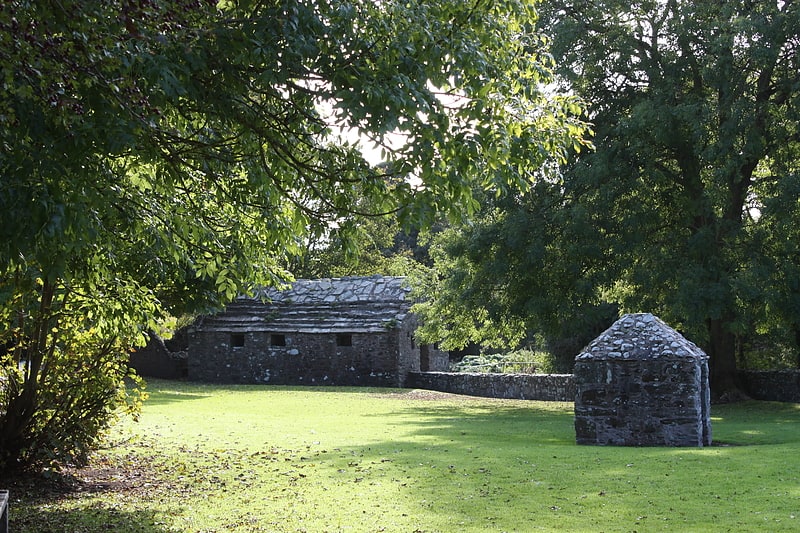
Historical landmark in Northern Ireland. Struell Wells are a set of four holy wells in the townland of Struell, 1.5 miles east of Downpatrick, County Down, Northern Ireland. The wells date from before the time of Saint Patrick, and even today are used for people seeking cures. On Mid-Summer Eve and the Friday before Lammas, hundreds of pilgrims used to visit Struell. The earliest written reference to the wells is in 1306, but none of the surviving buildings is earlier than about 1600. Pilgrimages to the site are well documented from the 16th century to the 19th century. The site is managed by the Northern Ireland Environment Agency.[5]
Address: Off the Struell Wells Road, Downpatrick
The Saint Patrick Centre
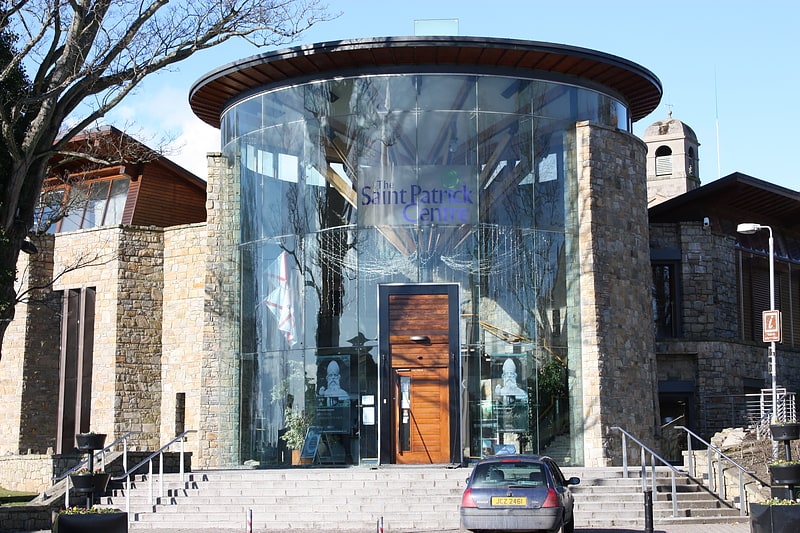
Heritage museum in Downpatrick, Northern Ireland. The Saint Patrick Visitor Centre is a modern exhibition complex located in Downpatrick, County Down, Northern Ireland. It is a permanent interpretative exhibition centre featuring interactive displays on the life and story of Saint Patrick, the patron saint of Ireland. It provides the only permanent exhibition centre in the world devoted to Saint Patrick.
It is situated in the town centre, below Down Cathedral and the site of Saint Patrick's grave and is open all year round. It was established using Millennium Project funding from the National Lottery, cost £6.3m and opened in 2001. In the exhibition, entitled Ego Patricius, Saint Patrick's own words are used to illuminate the arrival of Christianity in Ireland and its development through his mission. It also reveals the artwork and metalwork which were features of the Early Christian period, as well as the major impact of Irish missionaries in this period in Europe. The exhibition uses a multi-media approach and state-of-the art technology to focus on the historical Saint Patrick and not on the legends, as well as a film shown in the purpose-built cinema. The design involves bold glass walls, life-size figurines, videos and voice recordings.
Apart from the permanent exhibition, the Centre also features a tourist information centre, craft shop, cafe and art gallery. The Centre also has an Education Initiative reaching out to local schools.
The Centre has a cross community ethos of working in the ‘Spirit of Saint Patrick’ and has worked over the years with the Ancient Order of Hibernians, the Department of Foreign Affairs in Dublin and the Ulster-Scots Agency to support studies of local traditions. Support for the Centre has been growing from parents, schools, academics, artists, politicians and people in industry and commerce thanks to the people from a variety of academic disciplines who are presently planning its future. A range of scholars and political leaders from Europe and the United States are committed to supporting the continuing work of the Centre.
Since 2008 a series of 501c3 charities called the Friends of Saint Patrick Centre has created Chapters to support the work of the Centre in Milwaukee, Minnesota, Arizona, Albany and Toronto. Since that date they have supported the Centres’ Young Ambassadors' Programme, which hosts up to twelve American and Canadian university students, coming to learn about the people of Northern Ireland and feedback their discoveries to their families and friends and fellow students back at home.[6]
Address: 53A Market St, BT30 6LZ Downpatrick
Ballynoe Stone Circle
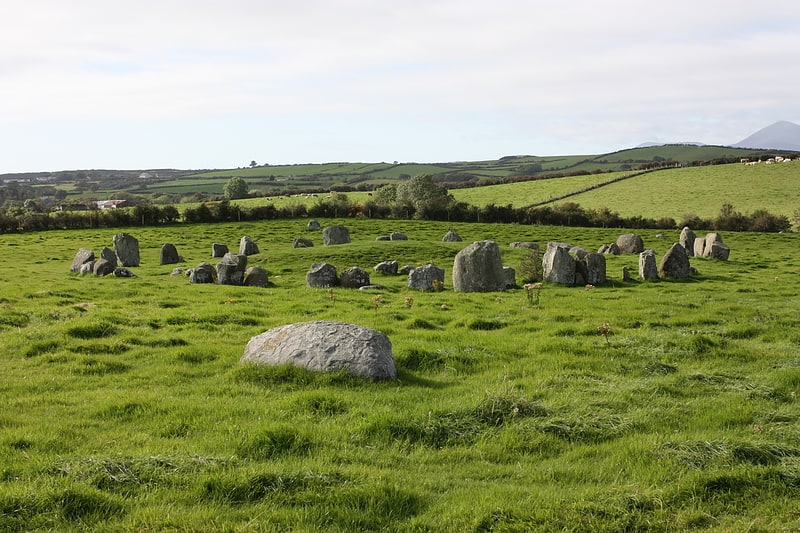
Tourist attraction in Northern Ireland. Ballynoe Stone Circle is a late Neolithic to Early Bronze Age stone circle located near the village of Ballynoe, County Down in Northern Ireland. It is one of around 1,300 recorded stone circles in the British Isles and Brittany.[7]
Address: 135 Ballynoe Road, BT30 8AR Downpatrick
Quoile Castle

Historical landmark in Northern Ireland. Quoile Castle is a castle situated 1.5 miles from Downpatrick, County Down, Northern Ireland, just off the main road from Downpatrick to Strangford, on the east bank of the River Quoile. The castle was built during the 16th-century and was continuously used up to the 1700s. Quoile Castle tower house is a State Care Historic Monument in the townland of Quoile, in Down District Council area, at grid ref: J4963 4701.[8]
Address: 5 Quay Road, BT30 7JB Downpatrick
Downpatrick Courthouse

Downpatrick Courthouse is a judicial facility on English Street, Downpatrick, County Down, Northern Ireland. The courthouse, which served as the headquarters of Down County Council from 1878 to 1973, is a Grade B+ listed building.[9]
Castle Ward - National Trust

Forts and castles, History museum
Address: Castle Ward Estate, BT30 7LS Downpatrick